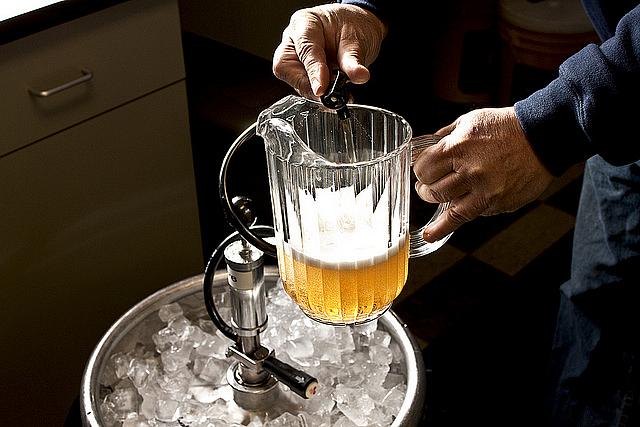Amid season’s excesses, a doctor’s case for a dry January

Another new year has birthed itself on schedule, celebrated across the country with liberal portions of good old booze. Every year, bars and restaurants entice customers with “all-you-can-drink” specials, priced to imply that one must drink eight or more drinks in order to receive maximum return on investment. This and other similar invitations from dive bars, apartment parties, and the entire municipality of Las Vegas result in blackouts, fatal car accidents, fights, and an epidemic of hangovers on January 1. One also has to wonder about the number of unintended pregnancies that occur after this annual night of imbibing.
America is in love with liquor. It’s forbidden and not forbidden at the same time; serving to minors is a crime, but having a job that lets employees crack open beers before the workday is over is a badge of honor. Prohibition has been over since FDR ascended to the presidency on that boozy platform, but the way many Americans drink has a desperation to it: the shots slammed back, the apology of “Let me buy you a drink” after a drunken fight; the slight undercurrent of pride when someone has a story of alcohol-related illness or debauchery to tell. People are genuinely afraid to be perceived as boring, and alcohol is interesting.
And then doctors deal with the aftermath. A staggering percentage of my clinical cases in medical school and residency were alcohol-related, and therefore entirely preventable. There was the guy with dilated cardiomyopathy (a heart like a spent Mylar balloon) from drinking. The seizures and bloody bitten tongues from withdrawal. The cirrhotic comas. I could order banana bags — the IV saline solution, jaundiced from the addition of B vitamins — in my sleep, not that there was much sleep in those days.
Of course, those were the chronic abusers and the addicts. But so many more cases stemmed from functional alcoholism in working professionals, or from four or five too many vodka shots at a graduation party. There were 20-year-old wrong-way drivers with torn hearts. The fights that led to head trauma and hemorrhage. The too-young diabetes and the nearly fatal perforated ulcer. Even now, how many people are walking around with sapped vitamin stores, irritated esophagi, and sallow, dehydrated skin from the previous night’s cocktails? Patients balk at taking antibiotics because of worry about side effects, but they seem perfectly comfortable with the painful side effects of fermented grain.
We too often attribute “cool” to alcohol, seemingly unable to grow out of this mental association, although the incessant onslaught of alcohol ads in sports and television is partly to blame. Non-drinkers are often left out of bonding activities in college and beyond. Not using alcohol renders one subject to judgment. Inexperienced restaurant servers openly pout when customers order water instead of wine, unable to hide their disappointment in a smaller check. This phenomenon persists despite the numerous reasons patrons might be unable to drink alcohol, like addiction, liver disease, antibiotics, or pregnancy.
There are antioxidants in red wine, to be sure, but risk quickly outweighs benefit when people exceed the recommended daily maximum of alcohol (two glasses for men, one for women). Adhering to these restrictions at an American wedding reception would be considered the height of rudeness. As nutrition-wonk and physician Joel Fuhrman writes, “The link between alcohol and reduced risk of heart disease is likely due to the fact that alcohol interferes with blood clotting, rather than to a beneficial effect on the cardiovascular system. This blood-thinning effect would only be advantageous if you were consuming a dangerous, heart disease-causing diet.”
Someone finally did the research I have wanted to cite for so long. The CDC recently released a report demonstrating that a very significant percentage of Americans drink beyond the “health benefit” limit. The known cases of alcohol-related morbidity and mortality costs the U.S. $200 billion per year in health care costs and lost productivity.
What about the unknown costs? Could a college student have lost out on law school to a foreign student because chronic alcohol consumption led to memory lapses on an exam? What about all the cancers that arose due to polishing off a bottle of wine with the wife, night after night?
Here’s a bright spot, though. Those drinkers who are participating in the “Dry January” trend are statistically likely to use less alcohol going forward. Americans can try out the feeling of being sober, hydrated, and hangover-free. As with any legal drug, mindful use will minimize the unacceptable cost to our health care system — and perhaps give rise to New Year’s Eve events where light and non-drinkers feel welcome.
[Photo by Jenn Durfey via Flickr.]

